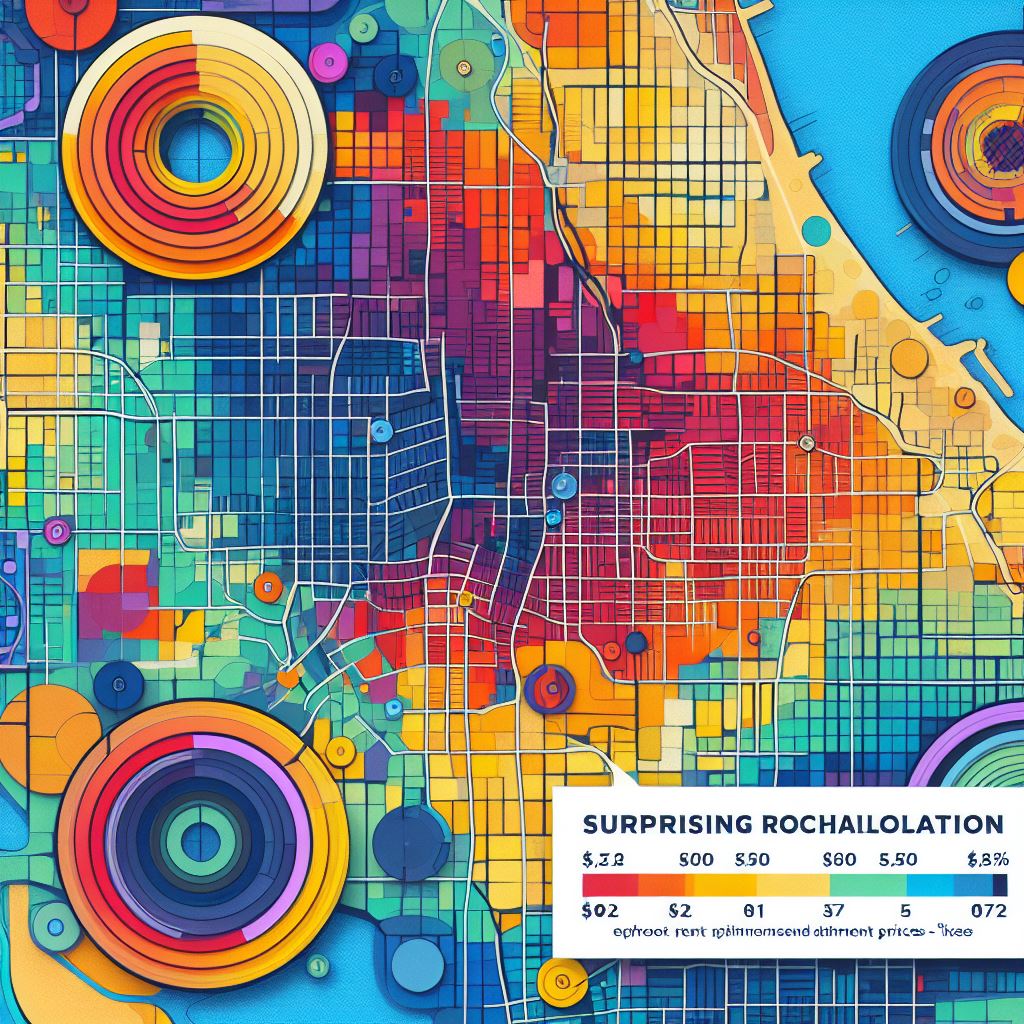School Districts and Surprising Apartment Rent Correlations

Did you know that the school district where you live could impact the cost of your apartment rent? It’s true!
A recent study found a surprising correlation between school districts and rental prices. In fact, apartments in highly-rated school districts were found to have significantly higher rents compared to those in lower-rated districts.
This fascinating data raises important questions about the relationship between education and housing costs, and has implications for both renters and real estate investors.
In this article, we will delve deeper into this topic and explore strategies for navigating these school district rent correlations.
Key Takeaways
- Location plays a significant role in determining rent prices, with apartments in prime areas with transportation hubs, schools, and commercial centers having higher rent prices.
- The quality of schools in an area directly correlates with the rental prices of nearby housing, with multiple studies showing higher rental costs in areas with highly rated schools.
- Parents are willing to pay a premium to live in neighborhoods with highly ranked schools, leading to high demand for housing and driving up rental costs in these areas.
- Policymakers should invest in education to enhance neighborhood attractiveness and livability, as good schools can increase rental prices, property values, and appreciation rates.
Factors Influencing Apartment Rent Prices
When considering factors influencing apartment rent prices, you should take into account various aspects such as location, amenities, and market demand.
The location of an apartment plays a significant role in determining its rent price. Apartments located in prime areas, close to transportation hubs, schools, and commercial centers, tend to have higher rent prices compared to those in less desirable locations.
Amenities also play a crucial role in determining rent prices. Apartments with amenities such as gyms, swimming pools, and parking spaces are in high demand and often command higher rents.
Market demand is another critical factor influencing rent prices. When there’s a high demand for apartments in a particular area, landlords can charge higher rents. On the other hand, in areas with low demand, landlords may have to lower their rents to attract tenants.
Understanding these factors is crucial for policymakers and real estate developers to make informed decisions and develop effective strategies to address housing affordability issues. By analyzing data on location, amenities, and market demand, policymakers can develop targeted policies to promote affordable housing while ensuring a fair return on investment for landlords.
Impact of School District on Rental Costs
To understand the impact of school districts on rental costs, you must consider the correlation between the quality of schools in an area and the amount of money tenants are willing to pay for apartments. This correlation is based on the understanding that parents are often willing to pay a premium to live in neighborhoods with highly ranked schools.
The impact of school districts on rental costs can be seen through the following imagery:
- Families flocking to areas with top-rated schools, creating a high demand for housing and driving up rental costs.
- An influx of families in these areas leads to increased competition for limited housing options, pushing rental prices even higher.
This phenomenon can be observed in numerous studies that highlight the direct relationship between school district quality and rental costs. For example, a study conducted in California found that rental prices in areas with highly ranked schools were, on average, 5-10% higher compared to areas with lower ranked schools. Another study in New York City showed that rental costs within a half-mile radius of top-performing public schools were up to 15% higher than those near lower-performing schools.
Given the strong correlation between school district quality and rental costs, policymakers should consider the importance of investing in education as a means to enhance the overall attractiveness and livability of a neighborhood. By prioritizing education funding and improving school quality, policymakers can help create thriving communities that not only benefit students but also attract tenants willing to pay a premium for a quality education for their children.
Examining the Relationship Between Schools and Housing
You can further understand the impact of school districts on rental costs by examining the direct relationship between schools and housing. When it comes to renting an apartment or house, many factors come into play, and the quality of the local school district is often a significant consideration for families.
In fact, research has shown that there’s a strong correlation between the quality of schools in a particular area and the rental prices of nearby housing. Multiple studies have found that rental costs tend to be higher in areas with highly rated schools. This is because parents are willing to pay a premium to live in a neighborhood with good schools, as they believe it will provide their children with a better education and increase their chances of success. In turn, this increased demand for housing in these areas drives up rental prices.
Additionally, the relationship between schools and housing goes beyond just rental costs. The quality of schools can also impact property values. Homes located in areas with top-rated schools often see higher appreciation rates and are more likely to retain their value during economic downturns. This makes investing in housing in these areas more attractive, further driving up prices.
Understanding the relationship between schools and housing is crucial for policymakers. By investing in improving schools, policymakers can’t only enhance the education system but also contribute to the overall development of a community. Additionally, they can implement policies and initiatives that promote affordable housing options in areas with good schools, ensuring that all families have access to quality education.
Implications for Renters and Real Estate Investors
Renters and real estate investors alike should consider the implications of school districts on apartment rents. The quality of schools in a particular district can have a significant impact on the demand for rental properties in that area, which in turn affects the rental prices. Here are some key points to keep in mind:
- Desirability: Apartments located in highly-rated school districts tend to be in high demand among families with school-age children. This increased demand can drive up rental prices, making it more costly for renters and potentially more profitable for real estate investors.
- Location: The proximity of an apartment to top-performing schools can also affect its rent. Apartments located within close proximity to highly-rated schools often command higher rents due to the convenience and access to quality education they offer.
- *Imagine a picture of a family walking their children to school from their apartment complex just a few blocks away.*
- *Visualize a map showing the locations of top-performing schools and the surrounding rental properties with higher rent prices.*
Understanding the implications of school districts on apartment rents is essential for renters and real estate investors looking to make informed decisions. By recognizing the correlation between school districts and rental prices, individuals can develop strategies for navigating this relationship and maximizing their investment potential.
Now, let’s explore some strategies for effectively navigating the impact of school district rent correlations.
Strategies for Navigating School District Rent Correlations
When considering the impact of school district rent correlations, it’s important to explore effective strategies for navigating this relationship and maximizing your investment potential.
As a renter or real estate investor, there are several strategies you can employ to ensure you make informed decisions.
Firstly, conducting thorough research on the school district is crucial. Look into the district’s academic performance, reputation, and extracurricular activities. This data-driven approach will help you understand the quality of education provided and the potential demand for rental properties in the area.
Secondly, keep an eye on zoning changes and new school developments. Changes in school boundaries can have a significant impact on rental prices. Being aware of any proposed changes will allow you to anticipate shifts in demand and make proactive decisions.
Additionally, consider the demographics of the area. Families with school-aged children often prioritize living in neighborhoods with quality schools. Targeting areas with a higher percentage of families can help ensure a steady demand for rental properties.
Lastly, work closely with a knowledgeable real estate agent who specializes in the local market. They can provide valuable insights and guide you through the complexities of school district rent correlations.
Frequently Asked Questions
How Do Property Values in School Districts Affect Apartment Rent Prices?
Property values in school districts have a significant impact on apartment rent prices. When schools are highly regarded, demand for housing in the area increases, causing rent prices to rise.
Are There Any Specific School District Characteristics That Tend to Result in Higher Rental Costs?
There are specific school district characteristics that tend to result in higher rental costs. These include high test scores, highly ranked schools, and proximity to prestigious universities.
Do School District Boundaries Have a Significant Impact on Apartment Rental Prices?
School district boundaries can have a significant impact on apartment rental prices. Factors such as reputation, academic performance, and proximity to desirable schools can drive up rents in certain areas.
Are There Any Strategies for Renters to Find Affordable Housing in High-Demand School Districts?
To find affordable housing in high-demand school districts, consider researching rental prices in surrounding areas, exploring rental assistance programs, or connecting with local housing advocacy organizations for potential resources and support.
How Do Real Estate Investors Use School District Data to Make Informed Investment Decisions?
Real estate investors use school district data to inform investment decisions. By analyzing factors such as academic performance, demographics, and property values, investors can identify districts with potential for growth and higher rental demand.



